|
This wonderful scene-setting image was created at Cooper Bay, South Georgia by friend Alan Lillich with the Canon 24-105mm f/4L IS EF USM AF Lens (hand held at 105mm) and the unfortunately discontinued EOS-1D Mark IV. ISO 400. Evaluative metering +2 stops: 1/400 sec. at f/8 in Manual mode. Click on the image for a larger version. Alan and his photographer-wife Pat are multiple IPT veterans; they will be with us again soon on both the Southwest Florida and Holland (both the tulips and birds segments) ITPs. Denise Ippolito can be seen dead center top in her new, grey Xtrahand vest. Her friend Lyndelle Fairlie of San Diego, CA is in blue. The folks in the center are getting their gear out of their drybags while the next zodiac is landing. All in white-out conditions. Here, Alan made good use of it to create an image that really set the scene. He used the Gentoo Penguin very nicely as a compositional anchor. Image copyright 2012 and courtesy of Alan Lillich. The 24-105 is my go-to B-roll lens. A B-roll lens is usually a short zoom lens that can be used to create general interest non-wildlife images, to create scenics (including scene-setting images), and to create bird- & wildlife-scapes. In a pinch, it is not bad as a quasi macro lens. (See here for an example of the latter.) I use mine for a great variety of purposes and make sure that it is in my Xtrahand vest each and every time that I head into the field. On the rare occasions that I forget to pack the 24-105 the need for it invariably arises almost immediately. |
If You Snooze…
If you snooze, you generally lose. We have seen that theme play out for me in various blog posts.
After nearly 3 days at sea on the way from the Falklands to South Georgia, and 8 days of strenuous landings and long hikes, I was tired. On my January 2011 trip to the Southern Oceans the hike up and down the bluff to the Macaroni Penguin colony at Cooper Bay had been a very difficult one. I do not like tussock grass…. Expedition leader Ted Cheeseman rightfully cautioned folks on the difficult conditions. It was assumed that the heavy snowfall would exacerbate the difficulty of the climbs up and down. The first leg of the hike was up a rock-strewn stream. I figured that with snow the rocks would be very slippery. My plan all along had been to skip the landing and do some Zodiac cruising. But as it turned out, there were no macaronis on the rocks along the shoreline so the zodiac cruising was a no-go.
The deciding factor for me was that after the hike up and down to the colony, you needed to hike back up a good distance and then back down the rocky stream, Having arisen at my usual 4am I did not technically snooze but I did decide to skip the landing and work on some images….
|
This wonderful, scene-setting image was created at Cooper Bay, South Georgia by friend, top student, and multiple-IPT veteran Clemens van der Werf with the Sigma 50-500mm f/4.5-6.3 DG OS HSM APO Autofocus Lens (hand held at 138mm) and the unfortunately discontinued EOS-1D Mark IV. ISO 1000. Evaluative metering +2 stops: 1/800 sec. at f/8 in Manual mode. Image copyright 2012 and courtesy of Clemens van der Werf Photography. Click on the image to enjoy a larger version. |
Clemens made great use of the Sigma 50-500mm lens (for Canon mount) on this trip. He properly works at an aperture of f/8 or smaller at all times as the lens is not sharp wide open. But as you can see in this and especially in the next image, the lens is incredibly sharp at f/8.
|
Here is another killer from Cooper Bay, South Georgia created by Clemens van der Werf with the Sigma 50-500mm f/4.5-6.3 DG OS HSM APO Autofocus Lens (this time hand held at 500mm) and the unfortunately discontinued EOS-1D Mark IV. ISO 800. Evaluative metering +1 stop: 1/400 sec. at f/10 in Manual mode. Image copyright 2012 and courtesy of Clemens van der Werf Photography. Click on the image to enjoy a larger version. |
Notice that Clemens took advantage of the great versatility of the Sigma 50-500mm lens, working at 138mm to create the first image, a lovely bird-scape, and then at 500mm for the tight head and shoulders portrait. Additionally, he knew that when working close to minimum focusing distance for the tight image the image would benefit from a bit of additional depth-of-field.
As immediately below, this lens is also available with a Nikon mount as we have seen before and often with images by Robert O’Toole.
|
This Sheathbill flight image was created by friend and multiple-IPT veteran Paul Mckenzie with the old Canon 300mm f/2.8L IS lens (replaced by the Canon 300mm f/2.8: IS II lens) and the unfortunately discontinued EOS-1D Mark IV. ISO 160. Evaluative metering +2/3 stop: 1/200 sec. at f/6.3 in Manual mode. Click for a larger version. Image copyright 2012 and courtesy of Paul Mckenzie. |
In the image above, Paul exhibited his usual great creativity by choosing a slow shutter speed to accentuate the falling snow. He wisely set a low ISO to enable him to use a wide aperture and then panned perfectly to achieve a sharp eye and head at 1/200 sec., a relatively slow shutter speed for flight photography.
|
This Light-mantled Sooty Albatross flight image was also created by the talented Paul Mckenzie with the old Canon 300mm f/2.8L IS lens (replaced by the Canon 300mm f/2.8: IS II lens) and the unfortunately discontinued EOS-1D Mark IV. ISO 500. Evaluative metering +1 2/3 stops: 1/800 sec. at f/8 in Manual mode. Click for a larger version. Image copyright 2012 and courtesy of Paul Mckenzie. |
Above we see more of the same from Paul. Note the different look to the snowflakes as a result of the faster shutter speed. This species is not an easy one to photograph…. While I was on the boat and most of the gang was concentrating on the macaronis, Paul was looking for something different. And did so with great success.
|
This killer image of copulating Gentoo Penguins was created on the Cooper Bay landing by the talented Michael Viljoen of South Africa. Michael attended a Bear Boat IPT a few years back. Nikon 200-400 hand held at 400mm. ISO 500. Evaluative metering at 0: 1/640 sec. at f/8. Rear focus. Image copyright 2012 and courtesy of Michael Viljoen.
|
Amazing behavior in a somewhat strange setting (at least for humans), a perfect exposure, two perfect head angles, and kissing penguins make for a great image. It would be easy to move the birds back in the frame a bit using techniques from APTATS II; it would take about five seconds. As presented, there is a bit too much room behind the lovebirds and not quite enough in front of them.
|
This image was created at Cooper Bay, South Georgia, by Denise Ippolito with the Canon 100-400mm IS L zoom lens (hand held at 400mm) and the unfortunately discontinued EOS-1D Mark IV. ISO 800. Evaluative metering +2 stops: 1/800 sec. at f/8 in Manual mode. Click for a larger version. Image copyright 2012 and courtesy of Denise Ippolito. |
Here, I like the inclusion of the tussock grasses in the upper corners to frame the subject, the wonderful head angle, and the disturbed snow that leads us to believe that this Macaroni Penguin was having a hard time getting around.
|
This image was created at Cooper Bay, South Georgia, by Denise Ippolito with the Canon 100-400mm IS L zoom lens (hand held at 400mm) and the unfortunately discontinued EOS-1D Mark IV. ISO 800. Evaluative metering +2 stops: 1/2500 sec. at f/5.6 in Manual mode. Click for a larger version. Image copyright 2012 and courtesy of Denise Ippolito. |
To create the “penguin in heaven” look for the image above, Denise chose her perspective carefully and then snuggled down awkwardly in the snow so that the snow-covered mound of tussock grasses would dominate the foreground. By doing so she created an ethereal mood for this image.
The 100-400 is much maligned. Denise loves here. And she consistently shows that <em>this lens is sharp at 400 and is sharp wide open. Those who disagree need to look in the mirror; can you say operator error?
When the Zodiacs Returned
When the zodiacs returned I was anxious to learn how the group had done. “It was wonderful. The Macaroni Penguins were at the top of the first climb. The foot-deep wet snow actually made the climb up easier. And the “climb” down was even easier.” Folks simply sat down, cradled their gear in their laps, and tobogganed down.
You snooze. You lose. You gotta love it.
Lessons Learned
#1: If there is a chance to photograph a difficult species, do not skip the landing.
#2: Bad weather often means great photography.
#3: And perhaps most important of all; do not assume that conditions will be the same from one year to the next. Heck, we should never assume that conditions will be the same from one day to the next.
It is often said that if we do not learn our lessons, God, or whomever is in charge, will keep putting us in the same situation till we get it right.
That said I was very tired and was concerned about getting hurt. Ted Cheesman says often, “If you are tired or concerned about the difficulty of a landing it is often best to stay on the ship.”
All in all I wish that I had gone :).
Which Is Your Favorite?
Take a moment to leave a comment and let us know which is your favorite image above and why. Feel free to choose more than one.
Click Heres
Click here to see BAA Bulletin #423. It includes info on the first MP4 Photoshop Tutorial Video, Bosque IPT late-registration discount info, and NYC Seminar info.
If you missed the South Georgia/Falkland Islands Southern Oceans Trip Report, see BAA Bulletin #422.
Photographer Links
Each of the photographer links above will take you to a web site that contains some incredible imagery. Enjoy.
Shopper’s Guide
Thanks a stack to all who have used our B&H affiliate links to purchase their gear as a thank you for all the free information that we bring you on the Blog and in the Bulletins. Before you purchase anything be sure to check out the advice in our Shopper’s Guide.
Shop B&H

Support the BAA Blog. Support the BAA Bulletins. We want and need to keep providing you with the latest free information, photography and Photoshop lessons, and all manner of related information. Show your appreciation by making your purchases immediately after clicking on any of the links above. Remember, B&H ain’t just photography!
And from the BAA On-line Store:
LensCoats. I have a LensCoat on each of my big lenses to protect them from nicks and thus increase their re-sales value. All my big lens LensCoat stuff is in Hardwood Snow pattern.
LegCoat Tripod Leg Covers. I have four tripods active and each has a Hardwood Snow LegCoat on it to help prevent further damage to my tender shoulders 🙂 And you will love them in mega-cold weather….
Gizo GT3532 LS CF Tripod. This one replaces the GT3530LS Tripod and will last you a lifetime. Learn more about this great tripod here.
Mongoose M3.6 Tripod Head. Right now this is the best tripod head around for use with lenses that weigh less than 9 pounds. For heavier lenses, check out the Wimberley V2 head.
Double Bubble Level. You will find one in my camera’s hot shoe whenever I am not using flash.
The Lens Align Mark II. I use the Lens Align Mark II pretty much religiously to micro-adjust all of my gear an average of once a month and always before a major trip. Enjoy our free comprehensive tutorial here.
BreezeBrowser. I do not see how any digital photographer can exist without this program.
Delkin Flash Cards. I use and depend on Delkin compact Flash Cards and card readers most every day. Learn more about their great 700X and 1000X cards here or about my favorite Delkin card here.

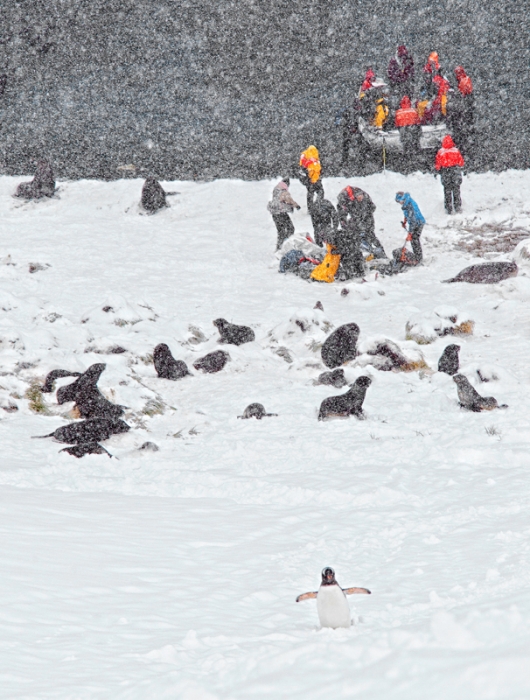
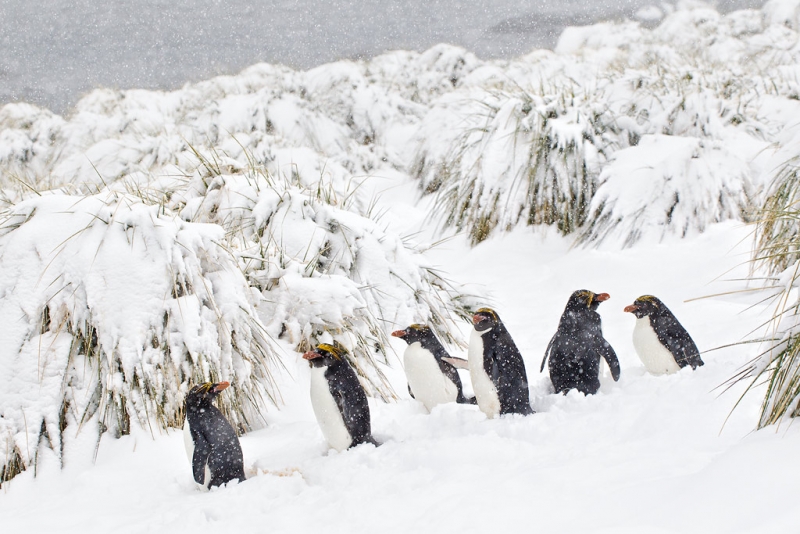
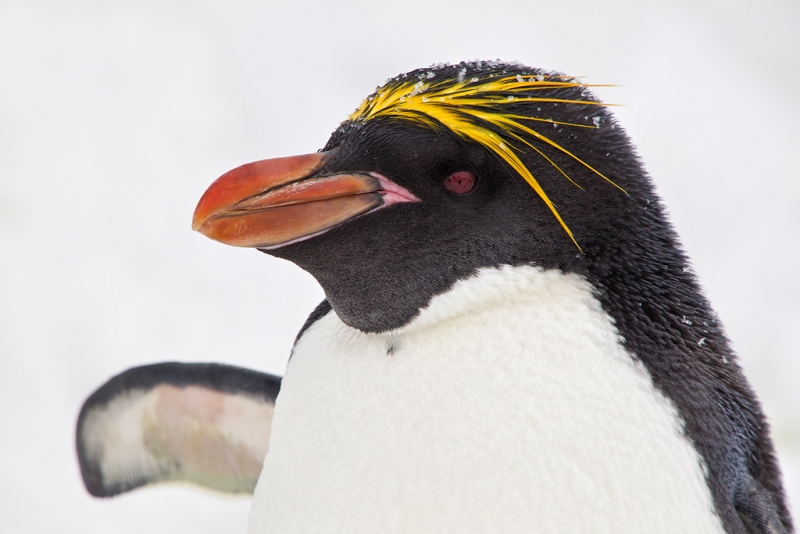
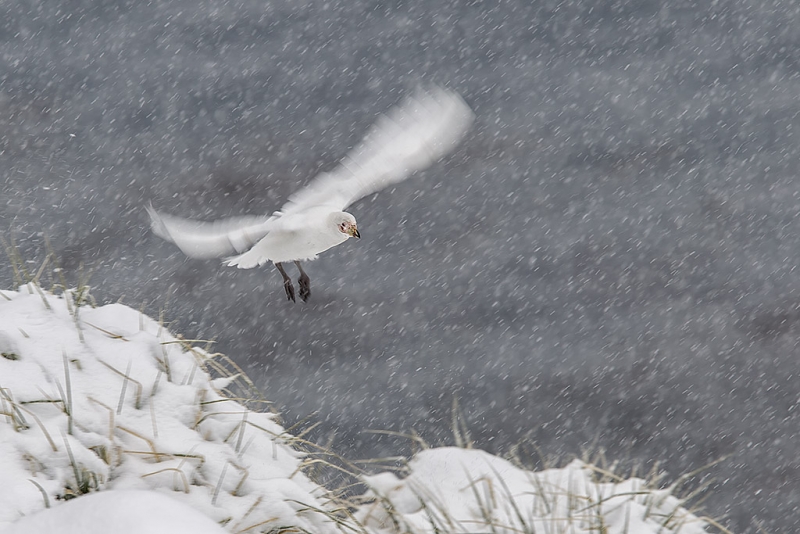
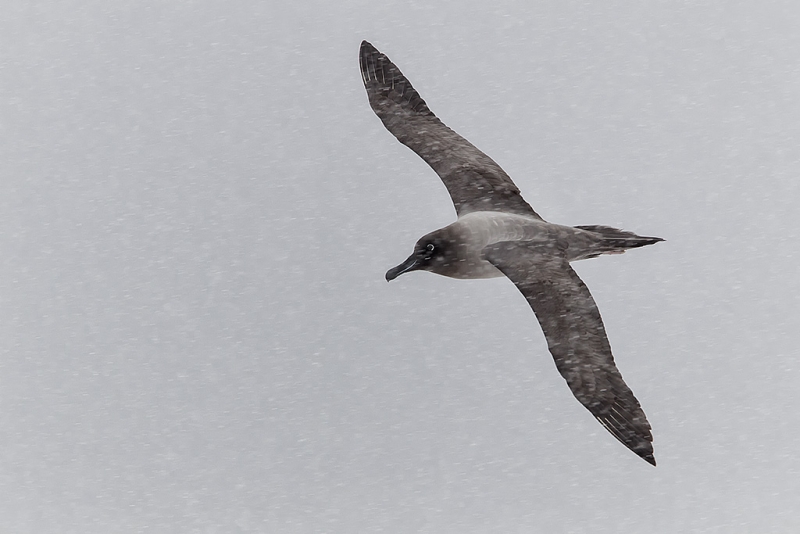
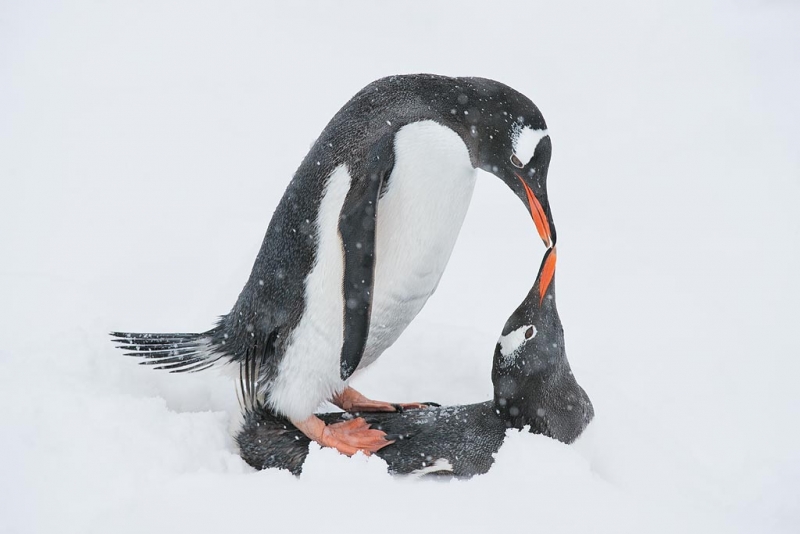
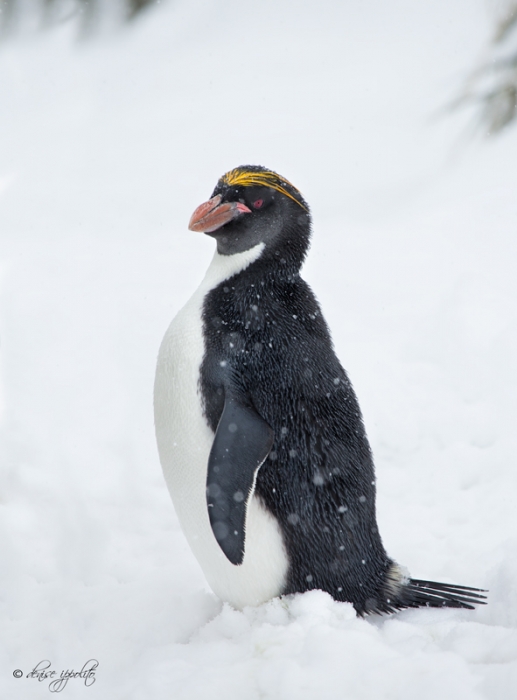
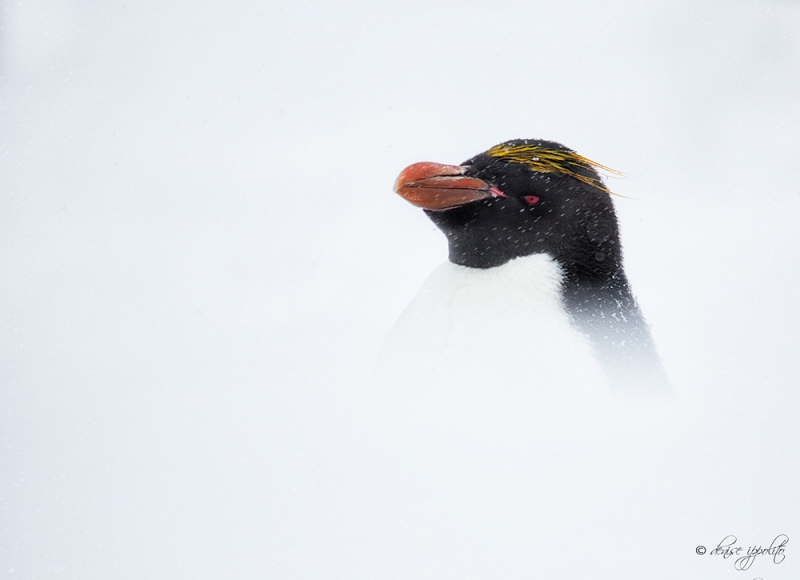













Can’t resist adding to this old thread. I’ve said similar to Artie about your body telling you when it needs rest, yet I still regret a zodiac landing I didn’t make once. You win some, you lose some. I guess this is one of those rare instances when economics actually helps me understand life, and that’s through the concept of opportunity cost. As for the 100-400, I tested an old one pretty extensively against my 400 f/5.6L and concluded it was quite sharp enough, but my prime focused faster. And cost and weighed less. But the 100-400 focuses closer, is more versatile, and is quite sharp enough. As for all the wonderful images, I guess I have to choose the first one, but they are all terrific.
His little tail totally makes me smile 🙂 🙂
That right-wing penguin is totally awesome. SO GOOD!!!
I love Alan’s scene setting image, I wish I had thought to create some images like that with the zodiac and all the snow.
Clemen’s close up is fantastic. I like the pose Nancy captured with the head-on stare, it’s great. Paul’s Sooty Albatross rocks and Michael’s image is awesome with the two bills touching!
I agree with Loren- your health is #1.
Artie,
What precautions should one take with their camera and lens when shooting in the snow or light rain?
Ivan
In light rain or when the snow is melting on the camera I’ll put a wool hat over the camera for a while followed by a small plastic bag. I am very aggressive in such conditions as as wonderful as the various rain covers are, they are all cumbersome to some degree. In a deluge I simply use a large, heavy duty trash bag to cover everything.
I seriously thought I wouldn’t do that climb and considered every step carefully! Best to be safe. On the way down I saw a great image looking down at the zodiacs and fur seals, but chose to leave the camera packed and just get down the hill intact.
I love all the macaronis and especially like that Denise used the natural out of focus foreground for her heaven shot. I really like Michael’s gentoos, and the blur of the wings of Paul’s sheathbill … and wow I have a sooty shot almost identical to Paul’s.
Artie,
I love Paul’s photo of the Sheathbill. Paul was sitting next to me when he made the image and my fingers and I were just too cold to get any photo of a bird in flight.
Thanks for sending out the photos with your blog.
My two faves are van der Werf’s second shot (close-up) and Viljoen’s cop-shot.
Artie –
Wonderful images! What a trip. Don’t feel too bad about skipping the landing; I know this sounds like heresy, but sometimes your body needs the rest more than you need the shots (at least mine does). Health is #1.
I do feel I need to comment on your comment about the 100-400 being sharp. SOME of them are sharp, some, not so much. I’ve owned 3 different copies, and all 3 had different “levels” of sharpness, all tested the same way and microadjusted (on a 7D) properly. I’ve seen some comments that some of the older ones were a bit more inconsistent from one to the next. My current version is fantastic, and no one will ever pry it out of my arthritic hands, unless, of course, they come out with a MkII 🙂
Thanks Loren. I did not feel too, too bad and I did not get hurt while on the ship!
As for the 100-400 we will need to agree to disagree. I personally have never seen a “bad copy” of any lens except for one 400 DO that someone borrowed one year at Bosque. But even that was not a bad copy, it was simply damaged….
Artie –
Not to pick nits, but I didn’t say “bad copy”…I said that, in my personal experience, some copies were not as sharp as others, and that I had seen comments that older ones were not as consistent, copy to copy, as newer ones.
Actually, I agree with you; I’ve never had a truly “bad copy” of a lens unless I managed to drop or other wise damage it myself 🙂
If a lens is not as sharp as another after being micro-adjusted it is a bad copy. I am still looking to see my first bad one so I guess that we will still have to disagree.
LOL…fair enough 🙂